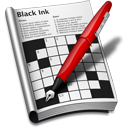Those of you who have followed my blog for some time are aware that Red Sweater Software is, more or less, a company of one. I am the lead developer, marketer, strategist, bookkeeper, PR rep, and, as luck would so terribly have it, designer.
Bob Walsh brilliantly summarizes the conundrum of small indie business people like myself, in the title of his blog: 47 Hats. If I may say so myself, I’ve adapted pretty well to wearing all these different hats. But inevitably, some of them don’t fit as well as others.
I’m not completely inept when it comes to graphic design, but I’m far from professionally capable. The beautiful aspects of my applications are mostly thanks to the brilliant work of designers such as Bryan Bell, who I will continue working with. But I also need somebody at the ready for a sustained period of design brainstorming and production. It’s time for me to take off this hat and hand it to somebody else.
Will you be my visual genius? Will you wear this hat?
About The Hat
As a part-time contractor to Red Sweater, you will facilitate the expansion of the company’s graphic identity in all areas including desktop UI, iPhone UI, web presence, advertising, and more. The position is hourly, with a guaranteed minimum per week or month to be arranged.
The position is primarily “visual design” but your skills in interaction or usability design would also be put to good use.
You’ll have a major impact on the look of Red Sweater’s products and presence. You’ll get paid. And when we get huge one day, you’ll be able to say you were there “way back when.”
The Qualifications
Sound like a position you’d excel in? This hat fits a designer who:
- Pushes pixels and pulls vectors with confidence and skill.
- Is passionate about typography, layout, and visual balance.
- Respects the tradeoff between usability and aesthetic beauty.
- Embraces platform design trends with moderation and taste.
On a personal level, the type of designer I will get along with:
- Work iteratively and collaboratively.
- Accepts criticism but stands up for strongly-held beliefs.
- Designs with integrity and would never steal the work of others.
To Apply
This is an open invitation to talented designers of all ages and circumstances. The only hard requirements are professionalism, skill, and availability for part-time work. Let’s make it happen!
Please send an email to “jobs” at red-sweater.com. Include in your message at least the following information:
- Your name and professional status.
- A portfolio of your best graphic design work.
- Your minimum and maximum hourly availability per month.
- Name up to three designers who you admire. What do you respect most most about their work or how they conduct it?
Feel free to include other information such as your expectations for pay rate, questions about Red Sweater or my work style, etc.
I look forward to hearing from you. And to taking off this hat!

